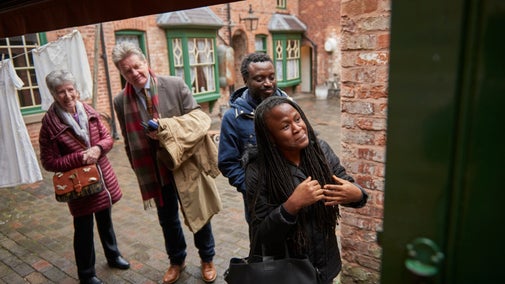
Archaeological work
We look after many rich and diverse archaeological sites. Archaeology helps us to learn more about them and protect them for the future.

We carry out historic landscape surveys on all the sites we look after. We make field visits, study archives and aerial photographs to build up a picture of each site's archaeological significance. Here's why this work is so important to us, and why we think it’s important for you too.
Some sites are buried below ground by natural processes, but may contain important artefacts or structural or organic remains. We use aerial photography and site visits to record the condition of these places and make recommendations for their future management.
Surveys also record the 'ordinary' details of landscapes which might otherwise be taken for granted and forgotten. A survey and research into field banks and walls in West Penwith, Cornwall, and in the Lake District, reveal that existing fields reflect the shapes of much earlier ones, and the field walls are actually the 'fossilised' survivals of medieval, sometimes prehistoric enclosures.
Features like these are significant for their local distinctiveness, giving identity and character to a particular area and to the people who belong to it. That's why we value the richness of everyday elements of the landscape as significant parts of the whole, giving local colour and context to the wider picture.
We also study and record the historic importance of woodlands, wood pasture and parks. Sometimes the woodland covers earlier earthwork remains, such as on the Holnicote Estate in Exmoor, where a recent survey revealed a small medieval settlement, with rectangular building platforms, hollow-ways (sunken ancient tracks), and what looks like a prehistoric enclosure. The discovery of remains like these gives us a clearer picture of the history of a site, and to better understand how it has developed over time.

We look after many rich and diverse archaeological sites. Archaeology helps us to learn more about them and protect them for the future.

Find out how we're addressing unequal access to nature, beauty and history and supporting urban areas in managing their heritage and green spaces.

Find out how we look after coastal paths along 890 miles of coastline in England, Wales and Northern Ireland to make sure everyone can benefit.

From tips on saving water to combatting plastic pollution, learn more about our work to protect precious coasts and rivers for wildlife and people, and what you can do to help.

From champagne bottles to deliberately blocked tunnels, learn about some of the discoveries at places in our care and the approaches we're using to protect them for future generations.

Follow the final journey of the Anglo-Saxon burial ship found at Sutton Hoo, Suffolk, in our podcast episode, 'The last voyage'. You can also find more episodes from series seven, filled with nature and history.